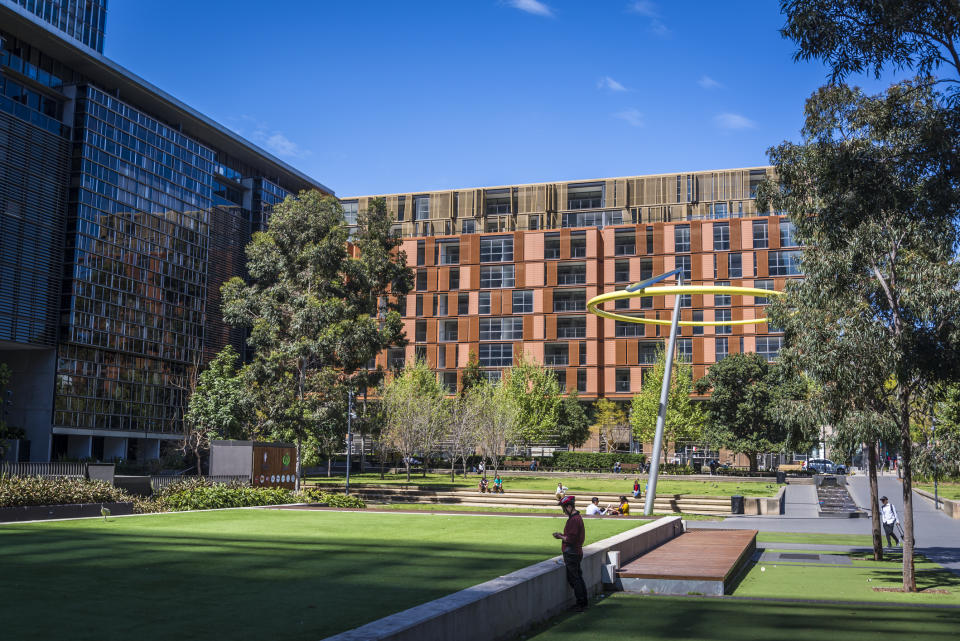The ‘wellness’ property trend that’s sweeping the globe

Australians are concerned about living standards – and property investors have been advised to take note.
And for good reason: according to the World Health Organisation (WHO), nearly 13 million people die from living or working in unhealthy environments, where environmental risk factors like air, water or soil pollution, chemical exposures, climate change, and UV radiation can be fatal.
As society’s awareness of the environment’s impact on health increases, Australians are becoming more conscious of where their money is being invested; choosing workplaces based on flexibility and work-life balance; and now, how and where they live.
“The way our homes have been built in the last century is reinforcing lifestyles that make us sick, stressed, alienated and unhappy,” the Global Wellness Institute (GWI) said on its website.
“Residential real estate is the next frontier that will be radically transformed by the wellness movement.”
According to GWI, the global wellness communities/real estate market will be worth US$180 billion (more than A$262 billion) by 2022, and it’s a trend that is gathering momentum in Australia, too, ranking third in the world’s wellness real estate market.

What does ‘wellness real estate’ look like?
According to GWI’s January 2018 Build Well to Live Well report, wellness lifestyle real estate is defined as “homes that are proactively designed and built to support the holistic health of their residents”. These are buildings that go on to foster ‘wellness communities’.
While it can have many aspects that promote health and wellbeing, wellness real estate can include good air quality, good lighting, access to community, access to green spaces, energy efficiency, and close proximity to public transport.
Across the world, there are more than 740 residential wellness real estate residential projects in the pipeline, 189 of which are in Australia, according to GWI.
The International WELL Building Institute (IWBI) has developed the WELL Building Standard, a rating system to determine how healthy and sustainable a building. This is measured on 11 aspects of air, water, nourishment, light, movement, thermal comfort, sound, materials, mind, community, and innovation.
Ultimately, wellness real estate could extend your life, believes US-based Compass sports and entertainment division national director Kofi Nartey.
“Pursuing wellness features in home building is a way to live longer and see even more of what the future has in store,” he told Forbes.
Wellness real estate in Australia
According to realestate.com.au chief economist Nerida Conisbee, appetite for wellness property is certainly here – and growing.
“There is a greater focus on what people need to feel better in their built environments. Australian developers are some of the most focussed in the world on this trend,” she said.
“Longer term, it will make the places we live and work better places to be.”
Wellness real estate spans commercial property as well as residential, Conisbee said.
“In the office sector, there is a strong focus from some of the major owners: Lang Walker announced last week that he was partnering with two wellness operators, Wellineux and Universal Fitness, which will offer services such as hot yoga, remedial massages, Zumba, oxygen chairs and meditation rooms at Parramatta Square and Collins Square. Many office buildings now offer lunchtime yoga classes as standard,” Conisbee said.
For University of South Australia academic and chairman of the Property Investment Professionals of Australia, Peter Koulizos, the trend marks a shift in focus from the ‘hard’ infrastructure or physical attributes of a building – such as designing for natural light and including bike racks, showers or childcare centres in office buildings – to ‘soft’ infrastructure, like massages or yoga or fitness classes.
“It’s all about making your workers happy so that they are more productive and stay with the firm,” Koulizos told Yahoo Finance.
And property investors stand to gain from the trend, he suggested.
“Rental income from energy efficient buildings is usually higher than from old style buildings because the tenant knows that their energy (electricity and water) bill will be lower so they are willing to spend more money on the rent.”
A non-existent and expensive fad?
However, not all property experts – including Koulizos – are convinced that this is a trend that’s reached Australian shores.
“At the moment, wellness features are appealing, especially to younger workers. I feel that their attraction will continue to grow but I can’t see it becoming compulsory,” he said.
“The soft infrastructure such as yoga and fitness classes, massages, etc. are up to the business owner, not the building owner, to organise.”
Metropole Property Strategist CEO Michael Yardney said none of the builders he asked knew about this ‘wellness property’ trend, and said he did not perceive an active market for wellness real estate in Australia.
“While homebuyers are cautious of pollution, living near industrial centres or on main roads, and more people are aware of the hazards of asbestos, there is currently no major trend by large developers to build new dwellings with specific wellness features or characteristics,” he told Yahoo Finance.
With affordability such an issue for home-buyers, it was difficult to see people pay a premium for wellness features, Yardney added.
“In the past property investors were lured into purchasing apartments in large complexes which included gyms, spas and saunas as these were meant to provide amenity for tenants and were marketed as features that would make the apartments more desirable in the future.
“Unfortunately investors found that the extra owners corporation fees for maintenance of these common facilities outweighed any extra rent they received.”
Make your money work with Yahoo Finance’s daily newsletter. Sign up here and stay on top of the latest money, news and tech news.

 Yahoo Finance
Yahoo Finance 
